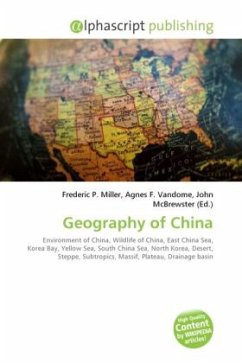The geography of China stretches some 5,026 kilometres across the East Asian landmass bordering the East China Sea, Korea Bay, Yellow Sea, and South China Sea, between North Korea and Vietnam in a changing configuration of broad plains, expansive deserts, and lofty mountain ranges, including vast areas of inhospitable terrain. The eastern half of the country, its seacoast fringed with offshore islands, is a region of fertile lowlands, foothills and mountains, deserts, steppes, and subtropical areas. The western half of China is a region of sunken basins, rolling plateaus, and towering massifs, including a portion of the highest tableland on earth. The vastness of the country and the barrenness of the western hinterland have important implications for defense strategy. In spite of many good harbors along the approximately 18,000-kilometer coastline, the nation has traditionally oriented itself not toward the sea but inland, developing as an imperial power whose center lay in the middle and lower reaches of the Yellow River on the northern plains
Bitte wählen Sie Ihr Anliegen aus.
Rechnungen
Retourenschein anfordern
Bestellstatus
Storno








